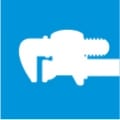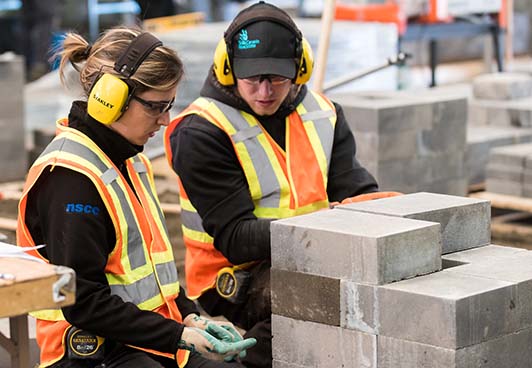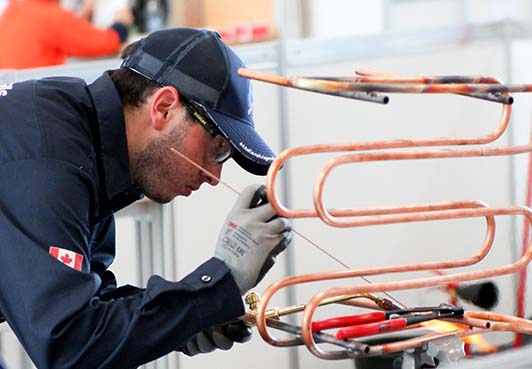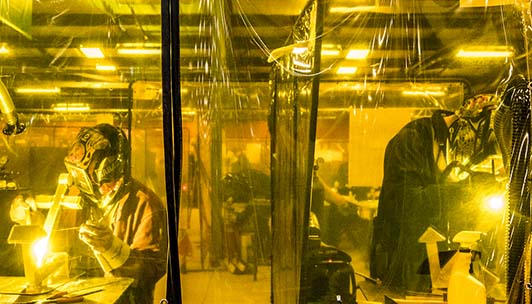Steamfitter Pipefitter
What is steamfitting/pipefitting?
Steamfitters and pipefitters lay out, assemble, fabricate, maintain, troubleshoot and repair piping systems carrying water, steam, chemicals and fuel in heating, cooling, lubricating and other process piping systems.
Steamfitters and pipefitters perform some or all of the following duties:
- Support the safe execution of work
- Install supports, valves, piping and control systems
- Read and interpret drawings, blueprints and specifications to determine layout requirements
- Cut openings for pipe in walls, floors and ceilings using hand or power tools or machines
- Select type and size of pipe required
- Measure, cut, thread and bend pipe to required shape using hand and power tools
- Weld, braze, cement, solder and thread joints to join pipes and fabricate sections of piping system
- Install supports, valves, piping and control systems
- Test system for leaks using testing equipment
- Clean and maintain pipe units and fittings and flush system
- Remove and replace worn components and reactivate system
- May prepare cost estimates for clients.
HOW TO JOIN THE FIELD
Completion of secondary school is usually required.
Completion of a four- to five-year apprenticeship program
or
A combination of over five years of work experience in the trade and some high school, college or industry courses in steamfitting, pipefitting or sprinkler system installation is usually required to be eligible for trade certification.
Steamfitter-pipefitter trade certification is compulsory in Prince Edward Island, Quebec, Ontario, Manitoba, and Alberta and available, but voluntary, in all other provinces and the territories.
Steamfitter-pipefitter (non-construction) trade certification is compulsory in Quebec.
Red Seal endorsement is also available to qualified steamfitters-pipefitters and sprinkler system installers upon successful completion of the interprovincial Red Seal examination.
Apprenticeship training programs for steamfitters, pipefitters and sprinkler system installers vary across Canada. For steamfitters and pipefitters, they generally involve four 12-month periods, including at least 6,000 hours of on-the-job training, four eight-week blocks of technical training and a final certificate exam.
INDIGENOUS AND REMOTE CONSIDERATIONS
Indigenous and remote communities may not have many people who work in this trade, so there likely wouldn’t be too much choice on jobs in this field. In small, fly-in communities, there may be only one or two companies to work for while staying in their home community. This may mean someone pursuing this trade will be looking at relocation or travelling to nearby communities.
DISABILITY CONSIDERATIONS
With this job being heavy manual labour, it may not be possible for someone with a severe physical disability. Accommodations may be necessary for someone with a learning disability. Working at heights and in challenging conditions may worsen anxiety disorders. A person suffering from anxiety may need accommodations to make this career possible.
Find the right career path for you with our interactive map!
Trouvez le cheminement de carrière qui vous convient grâce à notre carte interactive!
Sample Job Titles
- Apprentice pipefitter-steamfitter
- Fire protection mechanic
- Fire sprinkler fitter
- Marine pipefitter
- Sprinkler system fitter
Companies and Sectors
- Maintenance departments
- Factories
- Plants
- Sprinkler system contractors
- Self-employed

Steamfitter Pipefitter and the Skills for Success Program
The key Skills for Success for this career path are:
- Reading
- Communication
- Numeracy



